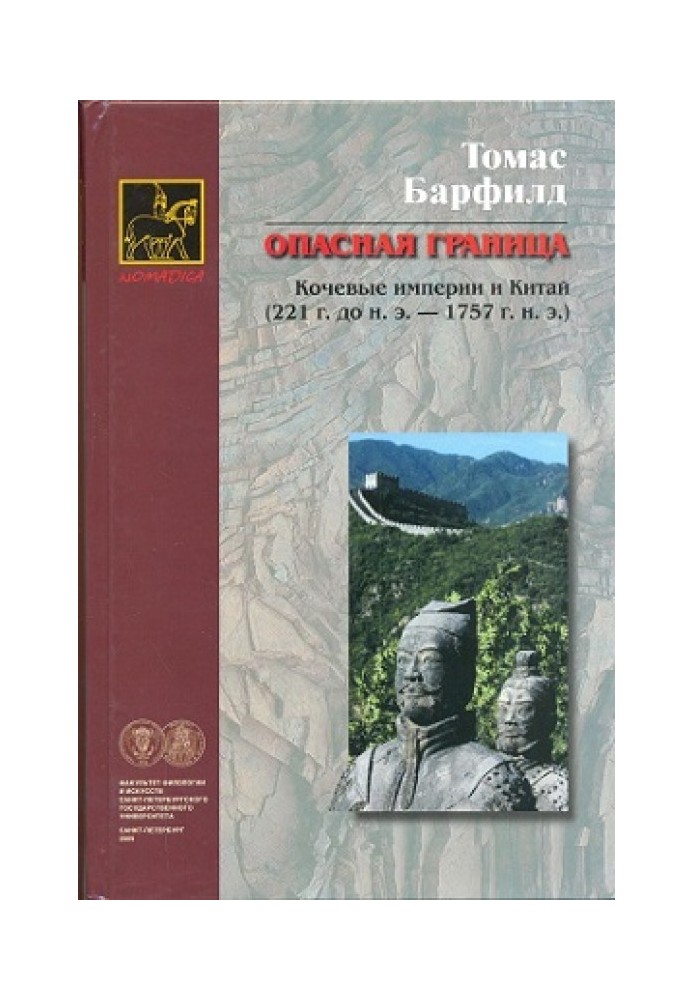Dangerous Frontier: Nomadic Empires and China (221 BC - 1757 AD)
 Instant download
Instant download
after payment (24/7)
 Wide range of formats
Wide range of formats
(for all gadgets)
 Full book
Full book
(including for Apple and Android)
The book is dedicated to the two-thousand-year history of China's relations with its northern neighbors - the nomadic tribes of Central Asia. The author theoretically substantiates the cyclical model of these relations, within the framework of which the state-political history of nomads appears inextricably linked with the processes of internal political development in China. He proves that the phenomenon of nomadic statehood in the eastern part of Central Asia was due to the need to create an effective system for the exploitation of the economic resources of the Chinese states by nomads. Particular attention is paid to the history of the Mongol Empire, which, according to the author, was not a product of the long evolution of the steppe imperial tradition, but an anomalous deviation from the cyclical model. Historical evidence is analyzed in the light modern socio-anthropological views. CONTENTS: Foreword by the author 5 Foreword by the editor of the American edition 10 Foreword by the editor of the Russian edition 131. Introduction. The World of the Steppe Nomads 32Political Organization of the Steppe Nomads and Border RelationsCycles of PowerCultural EcologyNomadic Pastoralism in Inner AsiaTribal OrganizationThe Rise of the Steppe Nomads2. The era of unification of the steppe tribes: the Xiongnu Empire 76Imperial confederationInternal organizationInheritance of powerForeign policy - connections with HanExternal border strategyChina's reactionNew worldInternecine war of the XiongnuInternal border strategyWang Man: China tries a new approachExternal border strategy in times of turmoilSecond internecine war of the Xiongnu3. The Fall of Centralized Power: The Rise of foreign dynasties 146 Xianbi "Empire" Revival of the external border strategy The fall of Han - the end of two imperial traditions Systemic collapse: the period of the Sixteen States Evolutionary cycle of border dynasties Militarist states of the Xiongnu Manchu borderland - the cradle of the dual organization Xianbi states Other northern states - Qin and Liang Toba: the third wave of conquest Ruanzhuang and land dynasties and the steppe Sinicization of Toba Wei4. Turkic Empires and Tang China 212First Turkic EmpireChinese KhaganRise and Fall of the Second Turkic EmpireUyghur EmpireSteppe Civilization5. Manchu Claimants 255Fall of Centralized Power in the Steppe and ChinaKhitan Liao DynastyJurchen Jin Dynasty Conquers Northern ChinaBroken Steppe6. Mongol Empire 288The Rise of Genghis KhanPolitical Organization of the MongolsMongol ConquestsStrategy and Politics of the MongolsPolitical Succession in the Mongol EmpireStruggle for Power: The Four Great KhansYuan DynastyThe Collapse of the Yuan Empire in China7. Steppenwolves and forest tigers: Ming dynasty, Mongols and Manchus 348Cycles of powerMongolia after the fall of the Yuan dynastyOirats and MingReturn of the Eastern MongolsAltan Khan and the surrender of the MingRise of the ManchusEarly Qing state8. The last days of the nomadic empires: the Qing conquest of Mongolia and Dzungaria 402Manchu conquest of ChinaQing border politics The Dzungars are the last steppe empire9. Epilogue. About the decline of the Mongols 446Bibliography 455List of sources and literature used in the translation 463
Data sheet
- Name of the Author
- Томас Барфилд Джефферсон
- Language
- Russian
- Translator
- Дмитрий Владимирович Рухлядев











